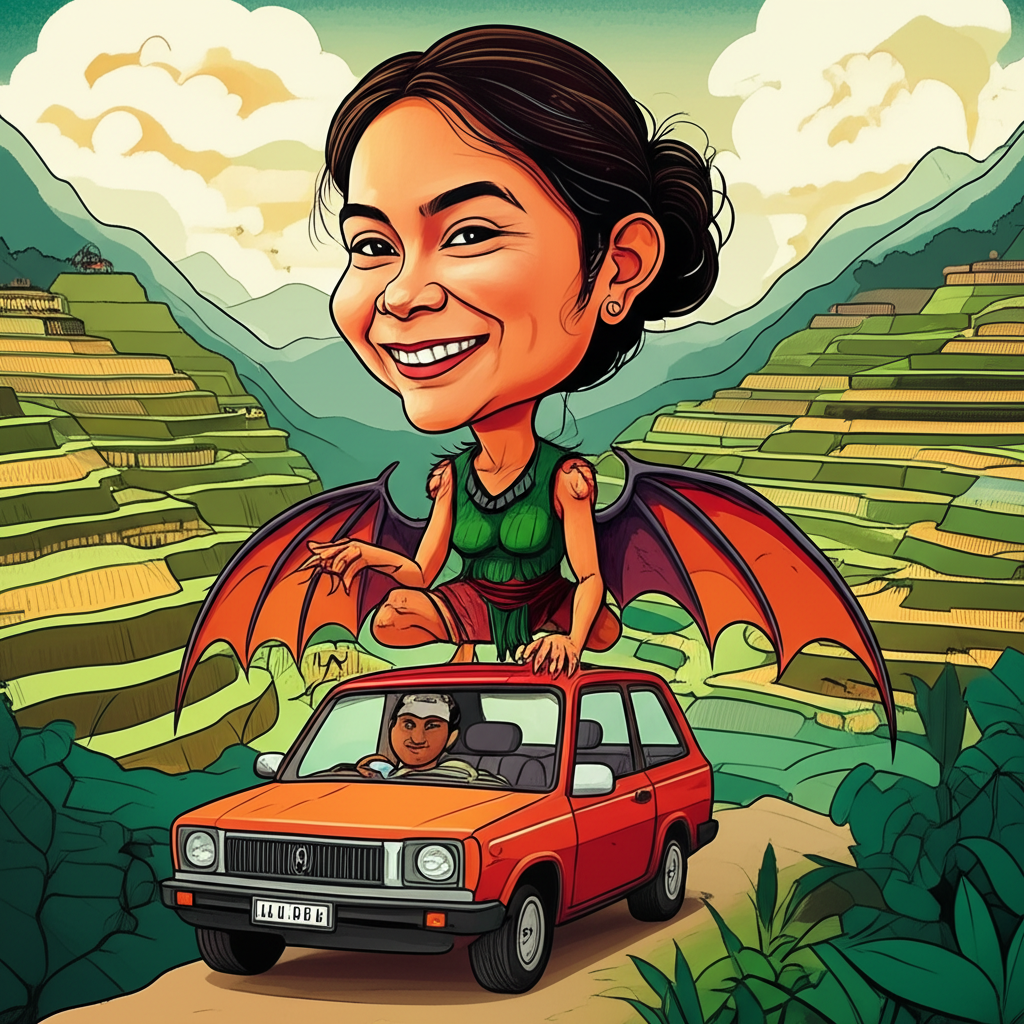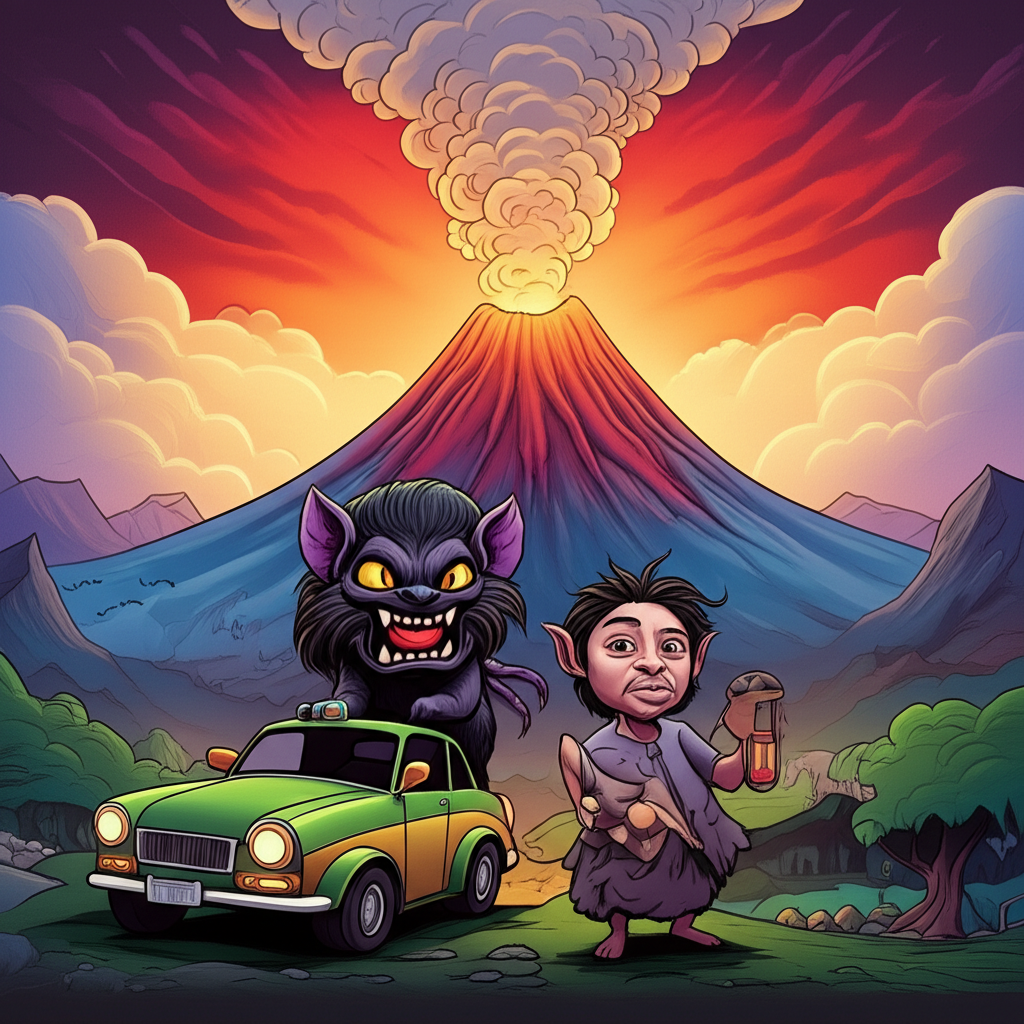
In the tapestry of human history, woven with threads of imagination and ancestral memory, lie stories that attempt to make sense of the unfathomable – the very act of creation. Among the indigenous Tagalog people of the Philippines, particularly in the regions of Luzon, such narratives formed the bedrock of their understanding of the world. These were not pronouncements of scientific fact, but rather poetic, symbolic interpretations passed down through generations, whispered around hearth fires and sung in communal gatherings. Today, we delve into one such creation tale, focusing on the figure of Anitun Tabu, a being whose story, within the context of ancient Tagalog folklore, offers a glimpse into their worldview, their fears, and their hopes.
Origins and Cultural Background: A World of Spirits and Cycles
The tales of Anitun Tabu and the early days of creation emerge from a time when the Tagalog people lived in close communion with the natural world. This was an era predating extensive written records, where knowledge and tradition were primarily oral. Their society was largely agrarian, deeply dependent on the cycles of planting and harvesting, the whims of weather, and the abundance of the land and sea. Their understanding of the cosmos was animistic; they believed that spirits, or anito, inhabited every aspect of nature – the towering trees, the flowing rivers, the rumbling thunder, and the gentle breeze. These spirits were not necessarily benevolent or malevolent in the modern sense, but powerful forces that could influence human lives, requiring respect, appeasement, and understanding.
The world, as they perceived it, was a place of balance and flux. Life and death, light and darkness, order and chaos were seen as interconnected and often in tension. Creation itself was not a singular, static event, but a continuous process, a dynamic interplay of elemental forces. Their myths, therefore, often reflected these natural cycles and the perceived struggle to maintain harmony in a world teeming with unseen powers.
Character/Creature Description: Anitun Tabu, the Tempest’s Breath
Within these ancient Tagalog narratives, Anitun Tabu is depicted as a being intrinsically linked to the wind and the storms. The name itself hints at this connection: "Anitun" often refers to the wind or a gust of wind, while "Tabu" can suggest a tempest or a strong, disruptive force. Anitun Tabu is not typically described in a fixed physical form, but rather as an elemental essence, a manifestation of the atmospheric energies that shaped their environment.
Symbolically, Anitun Tabu embodies the raw power of nature, the unpredictable and often formidable force of the wind. It represents the breath of the world, the invisible currents that can bring life-giving rain or devastating typhoons. Its attributes are those of change, movement, and primal energy. In some interpretations, Anitun Tabu might be personified as a spirit that rides the winds, its presence felt in the rustling leaves, the howling gales, and the sudden shifts in weather. This personification allows ancient storytellers to attribute intention and agency to these powerful natural phenomena, making them more relatable and understandable within their spiritual framework.
Main Story/Narrative Retelling: The Trial of Creation
In the beginning, before the mountains rose and the seas settled, there was only a formless void, a swirling expanse of potential. It was in this primordial state that Anitun Tabu first stirred. It was not born of a parent, nor did it emerge from a specific place; rather, it was the breath of that nascent existence, a restless, searching energy.
Anitun Tabu, driven by an inherent impulse, began to move through the formless expanse. Its passage created currents, eddies, and swirls. It was the first wind, a silent, invisible force shaping the unformed. As it moved, it encountered other nascent energies, other whispers of what was to come.
One such encounter was with the primordial waters, a vast, placid expanse that lay dormant. Anitun Tabu, in its relentless journey, swept across this surface, agitating the stillness. The wind whipped the water, creating ripples that grew into waves, and the waves began to churn. This interaction, this primal dance between wind and water, was the first significant act of shaping in this nascent world.
However, the raw power of Anitun Tabu, in its unbridled state, was also destructive. The winds it generated could be fierce, tearing at the very fabric of this emerging reality. The ancient tales speak of a "trial" that Anitun Tabu, and indeed the nascent creation, underwent. It was not a trial in a human court, but a test of endurance and balance.
As Anitun Tabu raged, the very elements it was interacting with threatened to disintegrate. The churning waters became chaotic, threatening to drown out any nascent form. The winds, unchecked, could tear apart any structure that began to coalesce. It was during this tumultuous period that other primordial forces, perhaps representing stillness, earth, or light, began to assert themselves.
The narrative suggests that Anitun Tabu had to learn to temper its power. It could not simply be a force of pure, untamed energy. To allow for the emergence of a stable world, Anitun Tabu had to find a balance. This might have involved a metaphorical "agreement" with other primal elements, a compromise that allowed for both movement and stability. The winds, which once threatened to tear everything apart, began to carry seeds, to shape the land with gentler currents, and to propel the first boats across the now-formed seas. The storm, the destructive aspect of Anitun Tabu, was now tempered by the promise of life-giving rain.
This period of trial and adjustment, this negotiation of elemental forces, is what the ancient Tagalog people believed laid the groundwork for the physical world as they knew it. It was the initial shaping, the first grand experiment in cosmic order.
Symbolism and Meaning: The Dance of Chaos and Order
The story of Anitun Tabu and the trial of creation served multiple symbolic purposes for the ancient Tagalog people. Primarily, it provided a framework for understanding the immense and often unpredictable power of nature, particularly the wind and storms. These were not random occurrences but were seen as manifestations of elemental forces guided by beings like Anitun Tabu.
The narrative also speaks to the inherent tension between chaos and order. Anitun Tabu, in its initial unbridled state, represents chaos – the disruptive force that threatens to undo creation. The "trial" signifies the process of bringing order out of this chaos, of finding a balance that allows for the emergence of a structured and sustainable world. This resonated deeply with their own lives, which were often at the mercy of natural cycles and the need to maintain harmony with their environment.
Furthermore, the story could be interpreted as a metaphor for leadership and governance. A leader, like Anitun Tabu, must possess power and influence, but must also exercise it with wisdom and restraint to ensure the well-being of their people and the stability of their community. The tempering of Anitun Tabu’s power suggests the importance of self-control and the understanding that true strength lies not in brute force, but in the ability to guide and shape with purpose.
Modern Perspective: Echoes in Contemporary Culture
While the belief in Anitun Tabu as a literal deity has faded with the advent of other belief systems, its echoes can still be found in modern interpretations of Filipino culture and mythology. In literature, Anitun Tabu might appear as a character in fantasy novels or short stories that draw inspiration from indigenous folklore, representing the untamed spirit of nature or a powerful, elemental force. In visual arts, its essence might be captured in abstract representations of wind and storms.
In the realm of film and games, the concept of elemental beings and creation myths continues to be a fertile ground for storytelling. While not always directly named Anitun Tabu, the archetypes of powerful natural spirits that shape worlds are frequently explored. Cultural studies and academic research also play a vital role in preserving and analyzing these narratives, ensuring that the rich tapestry of Tagalog mythology remains accessible for historical and educational understanding. These modern interpretations often reimagine these ancient tales, exploring their universal themes of power, balance, and the human relationship with the natural world.
Conclusion: A Legacy of Storytelling
The tale of Anitun Tabu and the trial of creation is a testament to the imaginative capacity of the ancient Tagalog people. It is a story born from their observations of the world around them, their awe at the power of nature, and their deep-seated need to understand their place within the grand cosmic narrative. As Muslims, we recognize that only Allah (God) is the true Creator and Sustainer of all existence. Our understanding of creation is firmly rooted in divine revelation.
However, these traditional stories, like Anitun Tabu, hold significant cultural and historical value. They offer a window into the worldview of our ancestors, illuminating their understanding of the world and their place within it. They remind us of the enduring power of storytelling to convey complex ideas, to explore the human condition, and to connect us to our heritage. The narratives of Anitun Tabu, therefore, are not to be believed as divine truth, but appreciated as a rich and fascinating part of our collective cultural heritage, a testament to the enduring human quest to comprehend the mysteries of existence through the magic of imagination and tradition.





